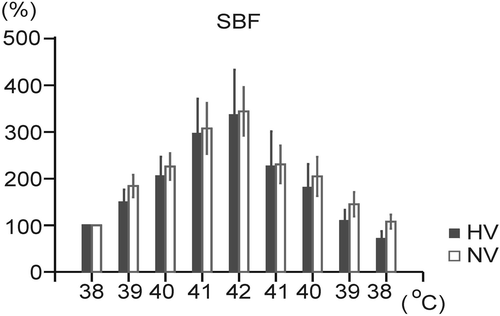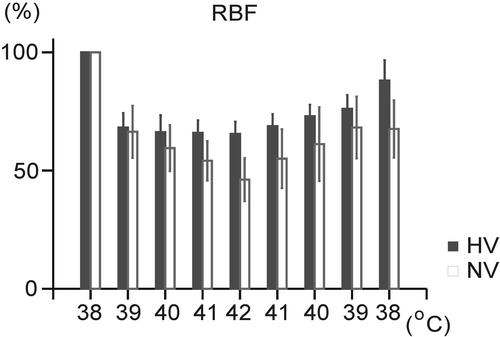Figures & data
Table I. Respiratory and cardiovascular variables before and after induction of hypovolemia by administration of furosemide.
Figure 1. Changes in minute ventilation (VE) during hyperthermia and its physical treatment in the normovolemic (solid line) and hypovolemic (dashed line) groups. Each point represents mean ± SEM. *p < 0.05 significantly different from the normovolemic group at the same body temperature. 38a: initial level of animal body temperature after induction of hypovolemia/isosmotic dehydration.
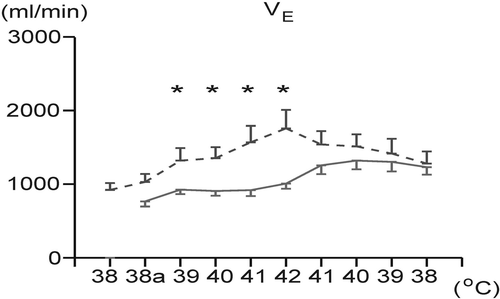
Table II. Respiratory and cardiovascular effects of hyperthermia and its physical treatment in normovolemic (NV) and hypovolemic (HV) groups.
Figure 2. Changes in frequency of breathing (f) during body surface heating and cooling in the normovolemic (solid line) and hypovolemic (dashed line) groups. Each point represents mean ± SEM. *p < 0.05 significantly different from the normovolemic group at the same body temperature. 38a: initial level of animal body temperature after induction of hypovolemia/isosmotic dehydration.
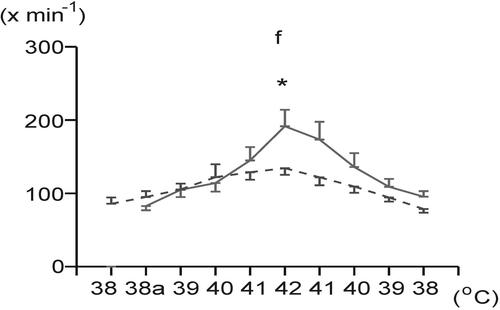
Figure 3. Changes in tidal volume (VT) during overheating to 42°C and during body temperature recovery in the normovolemic (solid line) and hypovolemic (dashed line) groups. Each point represents mean ± SEM. *p < 0.05 significantly different from the normovolemic group at the same body temperature. 38a: initial level of animal body temperature after induction of hypovolemia/isosmotic dehydration.
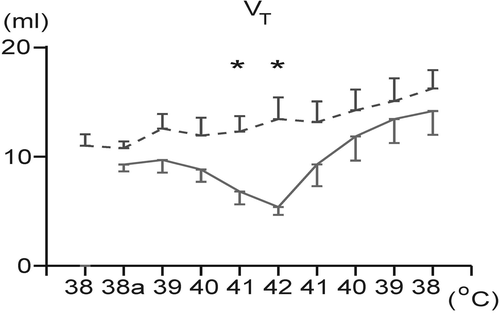
Figure 4. Changes in ear skin blood flow (SBF), as laser Doppler flowmetry during hyperthermia and its physical treatment in the normovolemic (NV) and hypovolemic (HV) groups. Each point represents mean ± SEM.
